|
|
This toy DJ console (or wannabe groovebox?) from 2004 has a lot of sound effect samples and lo-fi background preset music pattern loops. Also the stylish silver case with its 6 red flashing plastic drumpads looks pretty real.
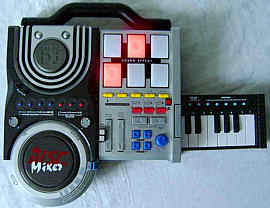 |
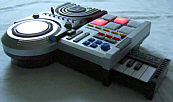 |
Annoying is that the Mix Me DJ has no volume control and (in unmodified state) yells ear tormenting loud out of its built-in speaker; although background music and drumpads have individual digital volume controls and the CD input jack even an analogue volume knob, the scratch disc and keyboard sound always roars at maximum volume. Unfortunately also the keyboard has some matrix flaws those prevent reliable polyphonic play (but since it anyway ignores key press duration, this can be circumvented by strumming chords instead of holding them). The box of this instrument shows the brand names "Kid's Com" and "Happy People". In USA a differently coloured Kawasaki version came out (case with violet instead of silver parts, black scratch disc, green speaker center - seen in e-mail photo).
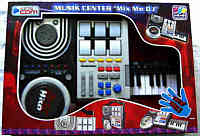 |
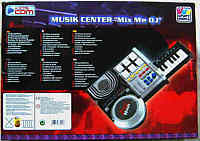 |
 |
 These box drawings apparently show an early design studies of the instrument.
These box drawings apparently show an early design studies of the instrument. |
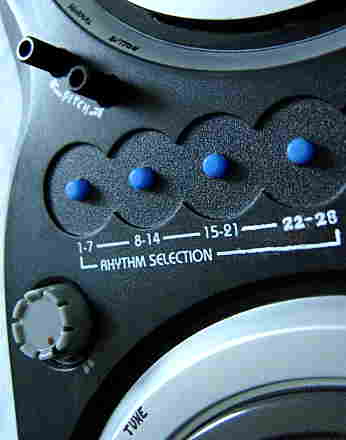 |
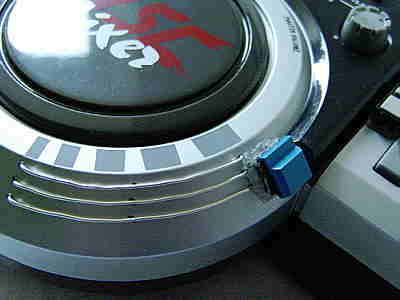 |
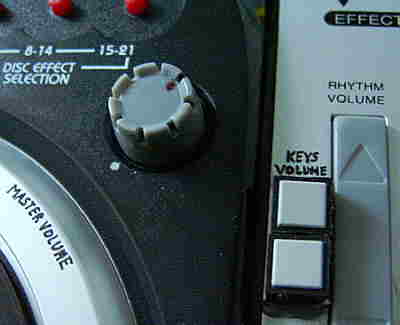 |
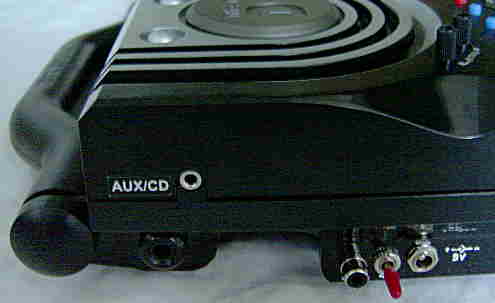 |
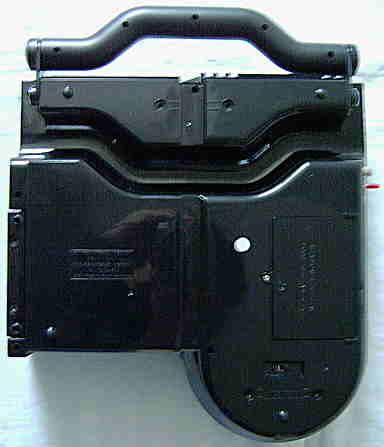 |
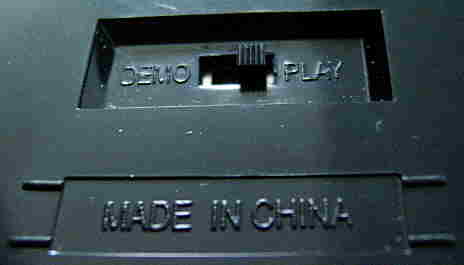 |
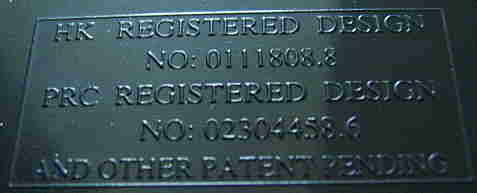 |
 |
 |
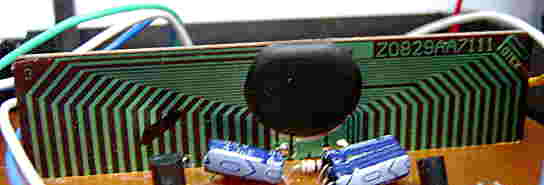 |
| rhythm pattern 22-28 | = "sound effect volume +" + key 3 + key 9 | |
| keyboard volume + | = "sound effect volume +" + key 1 + key 3 | |
| keyboard volume - | = "sound effect volume +" + key 2 + key 3 |
(All key numbers refer to the keyboard keys counted from left to right including the black keys - not the number row printed above them!)
The 2 grey "knobs" above the scratch disc were simply fake and don't turn, thus I sawed them off their plastic holders and added a real volume control pot to the left and a pitch control to the right one. I re-wired also the "stop" button as a 4th "rhythm selection" button and instead added a new "stop" button next to the "play" button (which is much more logical). The sounds have some bass, but especially during quiet passages there is sample aliasing noise audible due to low bit resolution. (But this lo-fi appeal fits quite nicely to the tekkno styles and does not really disturb.) There is no real power off mode but the "off" button only goes into standby; in standby mode the instrument switches on by any key or button press (with a popping noise) and plays that sound. Like with various other Potex sound toys, at the case button there is a "demo" switch, which apparently speeds up auto power-off when set to "demo".
The keyboard preset sounds are plain low resolution samples and sound quite bright, grainy and a bit thin. They are all quite short (maximum about 0.8s) and unlooped samples, have a key split zone in the middle and ignore key press duration. Although it is 3 note polyphonic, the lack of key matrix diodes causes mess when certain combinations of more than 2 keys are pressed. The sounds have only numbers instead of names thus all sound names were chosen by me. They are selected by 5 buttons cycling through each 2 sounds. "bubbeling synth pad" resembles much the Kawasaki Pro 37 synth sounds. "jazz organ bass" sounds like a dull Hammond organ bass with percussive attack. The "heavy metal guitar" is a distorted e-guitar, while "ker- sproing" is a unique harsh metallic noise with knocky attack and ascending pitch, which resembles a cross between a rattling ruler, a metal spring and a crow voice; it also somewhat reminds to the famous pterodactyl voice of the historical "Joust" videogame. The "analogue bass" is a Moog- like warm synth bass with filter resonance. The "e-organ" plays a chord in the left keyboard half and a (somewhat voice- like) plain organ tone to the right. The "synth banjo" resembles a banjo but is less percussive, while the "chorus organ" is a fairly harsh electronic organ sound with percussive attack and chorus effect. The "marimba voice" resembles a knocking marimba (or dull drum?) layered with a sitar- like bright synth voice timbre, while "ah! voice" resembles a male sung "ah!" but also may be a woodwind timbre. A bit strange is that the keyboard is not tuned on the note C, but the standard C is on its E key or the like.
Additionally there are 2 longer (4s at C1) "keyboard pattern" samples, those are basically just normal keyboard preset sounds. The "marimba jingle" is a monophonic marimba pattern, while the "howling drum & bass" is a hiphop drum & bass pattern with strongly modulated pitch (like from a slowly scratched record). Most interesting with these patterns is that they can be played polyphonic, and also the same pattern plays multiple times at the same pitch by trilling a key.
The "rhythms" are genuinely loop samples and include a lot of wicked complex tekkno synth stuff. Unlike the many funk patterns on Beat Square - Mix Evolution, the loop patterns here contain mainly tekkno and hiphop. Unfortunately no own material can be sampled into the instrument. Like with Kawasaki Pro 37, the tempo +/- buttons control their sample playback speed (like turntable speed control) and thus change the pitch also. Like with the Mix Evolution console, the control buttons for them are modelled after tape deck controls, although here only "play", "pause" and "stop" exist (but no fast forward nor rewind). The "play" button starts the pattern at its default tempo, the "stop" button stops it and the "pause" button stops it and restarts a stopped pattern from where it stopped. Additionally there is the "rhythm effect" button (with scissors icon), which chops (alternatingly mutes and unmutes) the pattern with the fixed speed of the flashing drumpad LED pattern (about 2Hz, independent from the selected tempo). A manual mute button would be more versatile here.
The pattern loops are: (names chosen by me)
1-7:
toot tekkno with drumroll
trashy knocking lo-fi tekkno with random thin scratch noises
warm ambient synth with synth fart drumroll
tekkno with "play that... beat" sample
acid house with aboriginal drum
howling acid house
synth zap tekkno with down stuttering synth beep
8-14:
pulsing breakbeat with duller growing click loop and "uh!" sample
synth zap with fat synth bass
howling scratched breakbeat
grungy dull siren tekkno with trashy drums
dreamy ambient house stuff
fat bass drum breakbeat with funky vibraphone
slow melodic techno with bass and drumroll
15-21:
funky e-bass with latin percussion
thin tekkno with synth filter chord and dull scratching
tribal pattern with purring tones and freaky pitchbending steel drums
thin distorted toot tekkno
trashy distorted chopped breakbeat noise stuff
strong scratch noise with dull organ chord
funky e-bass + drum kit and "uh!" sample
22-28: (only available through circuit-bending or special button/
key combinations)
slow snare/ rimshot with scratch noises
slow bassy reggae(?) rhythm
trashy bubbling thin tekkno rhythm
low and distorted bass and tom drum
thin tekkno rhythm
dull bass drum + blip percussion (a bit like Casio
SK-1 drums)
base + snare + fat distorted cowbell + snare(?)
The 6 drumpads can be switched among 10 fixed sets of preset sound samples by 5 semi- OBS preset buttons those each cycle through 2 sounds. They all are medium resolution samples and fit well into the tekkno environment.
The scratch disc can be switched through 21 sound combinations using 3 buttons those each cycle through 7 of them. Each preset contains 2 samples - one for turning clockwise and another for turning anti- clockwise. (The selected "clockwise" sound is played by the preset button press, which can disturb live performance.) Unlike with Mix Evolution, the turning speed is completely ignored. Some of the samples are also used in the drumpad sound presets. The presets contain beside scratch sounds various videogame- like laser zap noises and short jingles.
The drumpad and scratch samples were partly re-sampled from other keyboards
and sound toys. E.g. the scratch sample pair "5" contains a few ascending
Hammond organ notes and other direction some notes of the fanfare taken
from the Casio SA-40 baseball organ
track. The sample "Do it!" was possibly recorded from the Tiger
Toys - Techno Beat keychain toy.
circuit bending detailsThe hardware of this instrument contains less discrete components than Beat Square - Mix Evolution, but still more than average My Music Center variants. Like with Mix Evolution, the main CPU is made by Potex and has a DC controllable clock oscillator but no bitstream DAC. But in detail there are some differences, especially with the keyboard matrix which has no redundant lines. The 2 grey fake plastic knobs are mounted the same way like the holder of the real AUX/CD volume potentiometer, thus likely a real pot was planned here and later thrown out to cut down manufacturing cost.warning: The silver case paint of this instrument scratches easily, thus be careful with stray tools etc. during modification. keyboard matrix
All unknown function names and in/ out numbers in this chart were chosen
by me. The input lines are active- high, i.e. react on +Vs. Any functions
can be triggered by a non- locking switch (also through a diode) from one
"out" to one "in" pin.
Interesting is that the drumpads {"P.1".."P.6"} share neither input nor output lines with other fields and thus can not disturb other functions despite the matrix is diodeless. The "power on" matrix field is marked as easteregg, because on this instrument the "power on" button is wired differently. Possibly there are even some more easterggs, since the matrix is pretty big, buttons don't beep here and not everything may be obvious. The demo switch is not in the keyboard matrix but switches CPU pin 20 and 21 (both interconnected) against GND(?).
main volume controlThe main audio signal goes through a 2.7 kOhm resistor and then through a 0.47µF electrolytic cap to a trace, where it is mixed with the AUX/ CD audio signal (from 2 transistors) and goes to pin 7 of the power amplifier IC. To add a main volume control, disconnect the 0.47µF cap at the side of that trace and instead connect the now open end of the cap with the right end of a new 22 kOhm potentiometer. Connect the pot's left end with GND and its wiper through a 1 kOhm resistor with the trace where previously the 0.47µF cap was. (The resulting volume control will not control the AUX/ CD volume, which anyway has a volume knob.)add more bass?Aaron Howald e-mailed me the following info about his Kawasaki US version; possibly his version has a different analogue section, since mine sounds ok and makes enough bass:I sent a picture of the USA version of the Potex "mix me DJ", this time, nothing was cut out, it is the same (LOUD sound, gritty samples, pull-out keyboard) as the Potex, just a color change. I want to thank you for your info on this unit, I made the AUX input volume be the main volume through some re-wiring, and found the missing beat selector button thanks to you!Attention: I haven't verified this info yet. AC-adapter jackThe CPU gets +4.5V from an intermediate tap at the 3rd battery in the battery compartment, and this tap is also loaded by the 6 red flashing LEDs, thus unlike with Beat Square - Mix Evolution I had to add the voltage regulator here into the 4.5V branch (using a 7805 with output voltage reduced by an output diode), because a simple zener diode voltage divider made the pitch howl by voltage fluctuations caused by the varying current from the flashing LEDs. (The 6.8V zener diode I added is only for static electricity overvoltage protection at the touch sensor contacts.) The 9V input needs no additional voltage regulator because it only drives the power amplifier IC which doesn't hum when driven through an unstabilized AC-adapter.pitch controls & shitshotThe CPU clock frequency can be modified the same way like with My Music Center variants for pitch control and shitshot. I added here a complex assembly with 3 potentiometers, an alternating button switch and touch sensor contacts. As usual, the red marked diodes are necessary to prevent CPU destruction by static electricity. Because the "power on" also resets the CPU when crashed, there is no need to add a separate reset button. I have marked the master tuning pitch knob with 2 marks; one for the original tuning and one for a tuning where the keyboard octave is tuned correctly (but the background patterns play too fast).
|
Also a Mix Me DJ variant with bigger case exists, that looks more like a rectangular ghettoblaster with blue case bottom and silver top (keyboard section not collapsible, seen in a TV documentation about "weird folk" musics, where a woman was playing it). Apparently a pirated knock-off or hardware predecessor of Mix Me DJ was released as J.X.T 20808.
It is a quite strange feeling to watch how acid house and tekkno trance
came into being in the late 1980th and early 90th and how it passed by,
and how after the era of the Berlin Love Parade has already deceased,
it suddenly fully arrives now in the world of sound toys. Playing on this
strange lo-fi preset thing appears to me almost like opening a coffin full
of frozen samples from somewhere far ago and below. Does this mean that
it is all over now... and it is time for something new? Or has with
this everything just begun?!
| removal of these screws voids warranty... | ||
 |
||
|
|